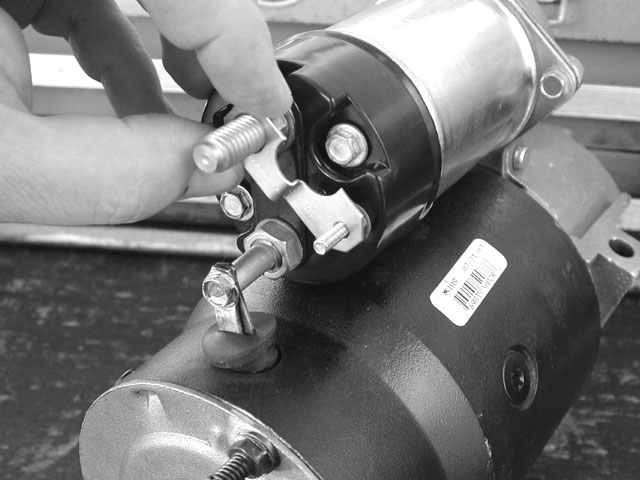King Herald
Well-known member
Like Bama said, the Ford solenoid/relay setup eliminates the small wire at the Chevy ''S" terminal.
Heat increases resistance and resistance decreases current and/or voltage... so, the skinny wire (already impeded by switches, connections and running length) gets hot and resistance increases, current and voltage drop... "start fail".
A strap or bus bar from the "S" terminal to BAT terminal puts the demand on the BAT cable, no skinny wire...

... like sneaky said, the Chevy solenoid still has to function as before, only now, thru the fat cable and the cable "switched" by the Ford solenoid. (We used this system with "our" Chevy race cars as heat from the headers increased the failure rate considerably.)
Naturally, connections must be clean and tight, don't forget the GROUNDS... as my shop instructor once said, "90% of electrical problems are ground"... an exaggeration, yes, but the point was taken all the same..
.
Just a thought, but if you are using the Ford solenoid to switch the main power, as in the left pic below, then you don't actually need to put the power through the Chevy solenoid, that thick power wire could go direct to the starter motor itself. The solenoid would simply move the starter gear, not transmit current. Heat soak would not be an issue. Turning the motor is the problem people have, not engaging the gear. Poor electrical connection through that solenoid causes that.
Obviously you'd need to wire it so the solenoid gets the correct feed, but it is only shoving a gear home.
This all gets confusing though, as some people only run the solenoid trigger through the Ford solenoid. A normal heavy duty relay would suffice if that were the case, surely? Most electric fans draw more than 30 amps continuous, so why the need for a starter relay?
Attachments
Last edited:







